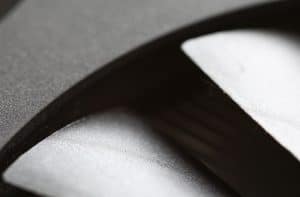 The realm of electrical thermal management hasn’t always followed the same trends of advancement as other forms of technology. For example, as many technological solutions have grown increasingly more complex, more advanced electrical cooling solutions have typically grown more streamlined. In doing so, they’ve also grown much more efficient and reliable, making modern thermal management a more cost and energy efficient process than it’s ever been. Rather than making electrical cooling more complicated in order to make it more advanced, modern electrical thermal management solutions enhance cooling processes by making them more natural and simplified.
The realm of electrical thermal management hasn’t always followed the same trends of advancement as other forms of technology. For example, as many technological solutions have grown increasingly more complex, more advanced electrical cooling solutions have typically grown more streamlined. In doing so, they’ve also grown much more efficient and reliable, making modern thermal management a more cost and energy efficient process than it’s ever been. Rather than making electrical cooling more complicated in order to make it more advanced, modern electrical thermal management solutions enhance cooling processes by making them more natural and simplified.
Eliminating the need for chilled air
Traditionally, common electrical thermal management solutions were already complicated. Cooling units such as air conditioners and air compressors operate by generating a consistent flow of chilled air and using it to keep the temperature inside of an electrical enclosure below the application’s maximum operating temperature. The need to generate and circulate cold air on a consistent basis is largely why traditional thermal management solutions can be complicated and costly to maintain. Consequently, eliminating this need is one of the first steps to modernizing electrical cooling. With modern cooling solutions, such as heat exchangers, electrical overheating is accomplished by transferring the waste heat, rather than circulating chilled air.
Optimizing the use of energy
By using thermal management processes that involve transferring heat instead of using chilled air, heat exchangers are able to accomplish a lot more with a lot less energy than more conventional cooling solutions. The processes that heat exchangers often use include natural properties of heat and an eco-friendly cooling fluid. Through natural/forced convection, conduction, and/or phase-change cooling, the fluid within a heat exchanger can rapidly absorb electrical waste heat and carry it away from sensitive components within the enclosure. The process of transferring heat takes significantly less energy than more traditional cold air processes, though modern heat exchangers can maintain significantly high-performance levels of electrical cooling.
Streamlining high-performance cooling
While modern thermal management solutions are more streamlined to help reduce energy and overall costs, they’ve succeeded because they’re also highly effective. Directly absorbing and transferring electrical waste heat as soon as it’s produced prevents it from being able to accumulate at all. It creates a more reliable way to prevent the accumulation of electrical waste heat. Compared to trying to outpace that accumulation with cold air circulation, transferring waste heat can accomplish higher-performance cooling while still maintaining more efficient operations. For more information about the modernization of electrical thermal management, call Noren Thermal Solutions in Taylor, TX, at 866-936-6736.







